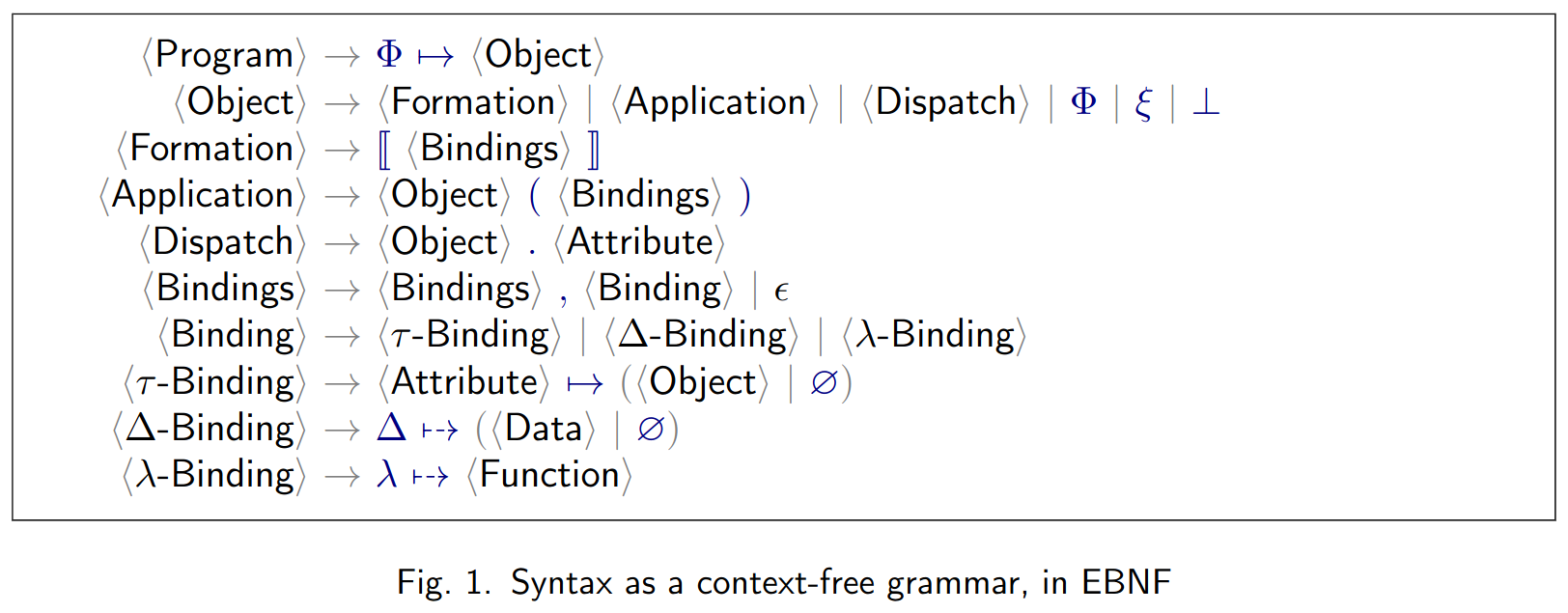Metrics
PHI grammar

We count
Object formations
- Example:
⟦ d ↦ ∅, c ↦ ∅ ⟧
Object applications
- Example:
ξ.b(c ↦ ⟦ ⟧)
Dynamic dispatches
- Example:
ξ.ρ.c
Dataless formations
Definition: \( \Delta \)-depth
\( \Delta \)-depth of an object describes how deep data is in the object when recursively traversing values attached to the object attributes. That is, \( \Delta \)-depth is \( \infty \) for all objects except formations. More specifically:
- the \( \Delta \)-depth of a formation with bytes attached to a \( \Delta \)-attribute is \( 1 \);
- for a non-empty formation, the \( \Delta \)-depth is:
- \( 1 + M \), where \( M \) is the minimal depth among objects attached to attributes of this formation;
- \( \infty \) if there are no objects attached to attributes of this formation;
- otherwise, the \( \Delta \)-depth of an object is \( \infty \).
Definition: Dataless object
An object is dataless if its \( \Delta \)-depth is greater than 2.
Examples
The following table demonstrates objects with their \( \Delta \)-depths:
